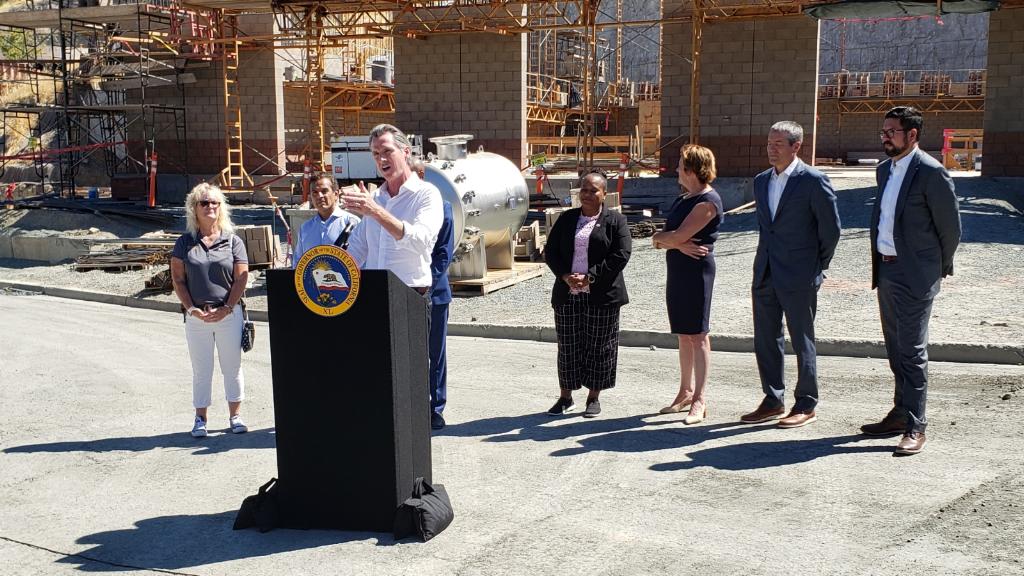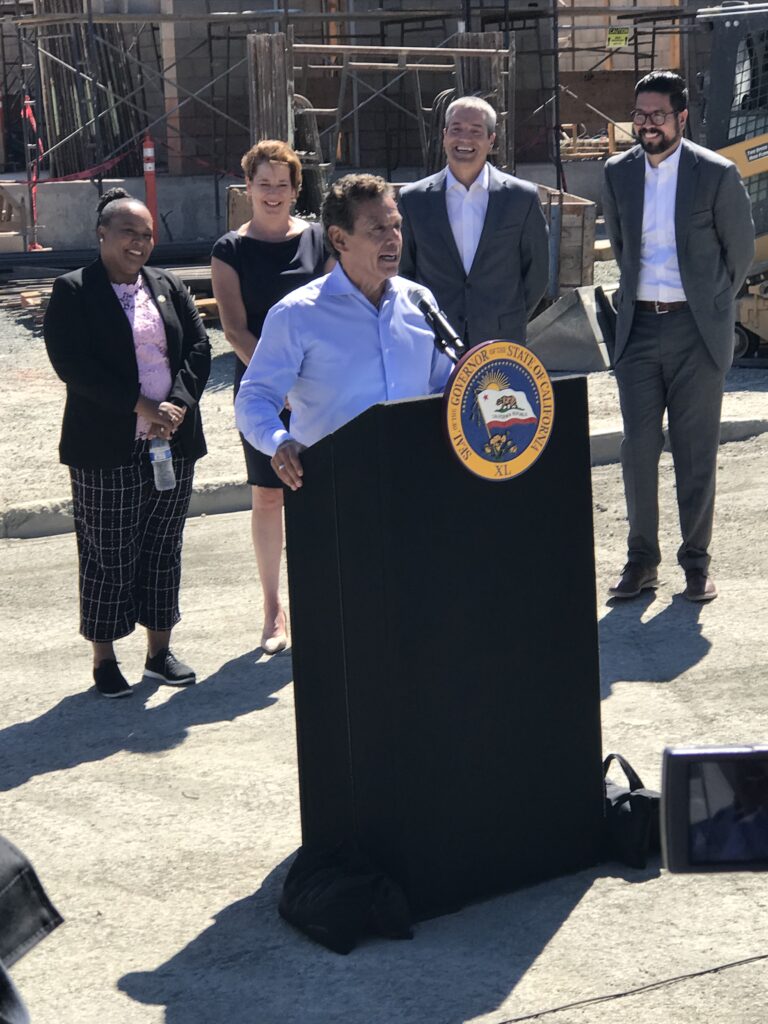Governor Newsom announces Water Supply Strategy for a hotter, drier California in Antioch on Thursday

With local and state officials joining him, Gov. Newsom speaks during a press conference at the site of the Antioch Brackish Water Desalination project to announce his Water Supply Strategy on Thursday, August 11, 2022. Photos by Allen D. Payton
Outlines actions needed now to invest in new sources, transform water management
Without action, state officials believe California’s water supply could diminish by up to 10% by 2040
Introduces former L.A. Mayor Villaraigosa as state’s new infrastructure czar

Antonio Villaraigosa was introduced by the governor as the state’s new infrastructure czar.
ANTIOCH – Hotter and drier weather conditions could reduce California’s water supply by up to 10% by the year 2040. To replace and replenish what we will lose to thirstier soils, vegetation, and the atmosphere, Governor Gavin Newsom on Thursday announced in California’s latest actions to increase water supply and adapt to more extreme weather patterns caused by climate change. Click here to read California’s Water Supply Strategy.
Thursday’s announcement at Antioch’s $110 million Brackish Desalination project follows $8 billion in state investments over the last two years to help store, recycle, de-salt and conserve the water it will need, generating enough water in the future for more than 8.4 million households by 2040.
The actions, outlined in a strategy document published by the Administration called “California’s Water Supply Strategy, Adapting to a Hotter, Drier Future” calls for investing in new sources of water supply, accelerating projects and modernizing how the state manages water through new technology.
This approach to California’s water supply management recognizes the latest science that indicates the American West is experiencing extreme, sustained drought conditions caused by hotter, drier weather. It means that a greater share of the rain and snowfall California receives will be absorbed by dry soils, consumed by thirsty plants, and evaporated into the air. This leaves less water to meet the state’s needs.
“The best science tells us that we need to act now to adapt to California’s water future. Extreme weather is a permanent fixture here in the American West and California will adapt to this new reality,” Governor Newsom said. “California is launching an aggressive plan to rebuild the way we source, store and deliver water so our kids and grandkids can continue to call California home in this hotter, drier climate.”
To help make up for the water supplies California could lose over the next two decades, the strategy prioritizes actions to capture, recycle, de-salt and conserve more water. These actions include:
- Creating storage space for up to 4 million acre-feet of water, which will allow us to capitalize on big storms when they do occur and store water for dry periods
- Recycling and reusing at least 800,000 acre-feet of water per year by 2030, enabling better and safer use of wastewater currently discharged to the ocean.
- Freeing up 500,000 acre-feet of water through more efficient water use and conservation, helping make up for water lost due to climate change.
- Making new water available for use by capturing stormwater and desalinating ocean water and salty water in groundwater basins, diversifying supplies and making the most of high flows during storm events.
These actions are identified broadly in the Newsom Administration’s Water Resilience Portfolio – the state’s master plan for water released in 2020 – but they will be expedited given the urgency of climate-driven changes. To advance the infrastructure and policies needed to adapt, the strategy enlists the help of the Legislature to streamline processes so projects can be planned, permitted and built more quickly, while protecting the environment.
Over the last three years, at the urging of the Governor, state leaders have earmarked more than $8 billion to modernize water infrastructure and management. The historic three-year, $5.2 billion investment in California water systems enacted in 2021-22 has enabled emergency drought response, improved water conservation to stretch water supplies, and enabled scores of local drought resilience projects. The 2022-23 budget includes an additional $2.8 billion for drought relief to hard-hit communities, water conservation, environmental protection for fish and wildlife and long-term drought resilience projects.
Newsom also introduced former Los Angeles Mayor and Speaker of the Assembly Antonio Villaraigosa as the state’s new infrastructure czar.
“With this influx of federal dollars, we have an incredible opportunity to rebuild California while creating quality jobs, modernizing crucial infrastructure and accelerating our clean transportation progress, benefiting communities up and down the state,” Newsom said. “Antonio has the extensive experience and relationships to deliver on this promise and bring together the many partners who will be key to our success. I look forward to his collaboration with the administration as we build up communities across California.”

Antioch’s $110 million Brackish Water Desalination plant project is currently under construction.
Construction on Antioch’s desalination plant, located behind the city’s water treatment plant at 401 Putnam Street is expected to be completed next year, city Public Works Director John Samuelson shared following the governor’s press conference.
the attachments to this post:

Gov. Newsom speaks in Antioch 081122

Antonio Villaraigosa speaks 081122

Antioch’s desal plant under construction 081122




















